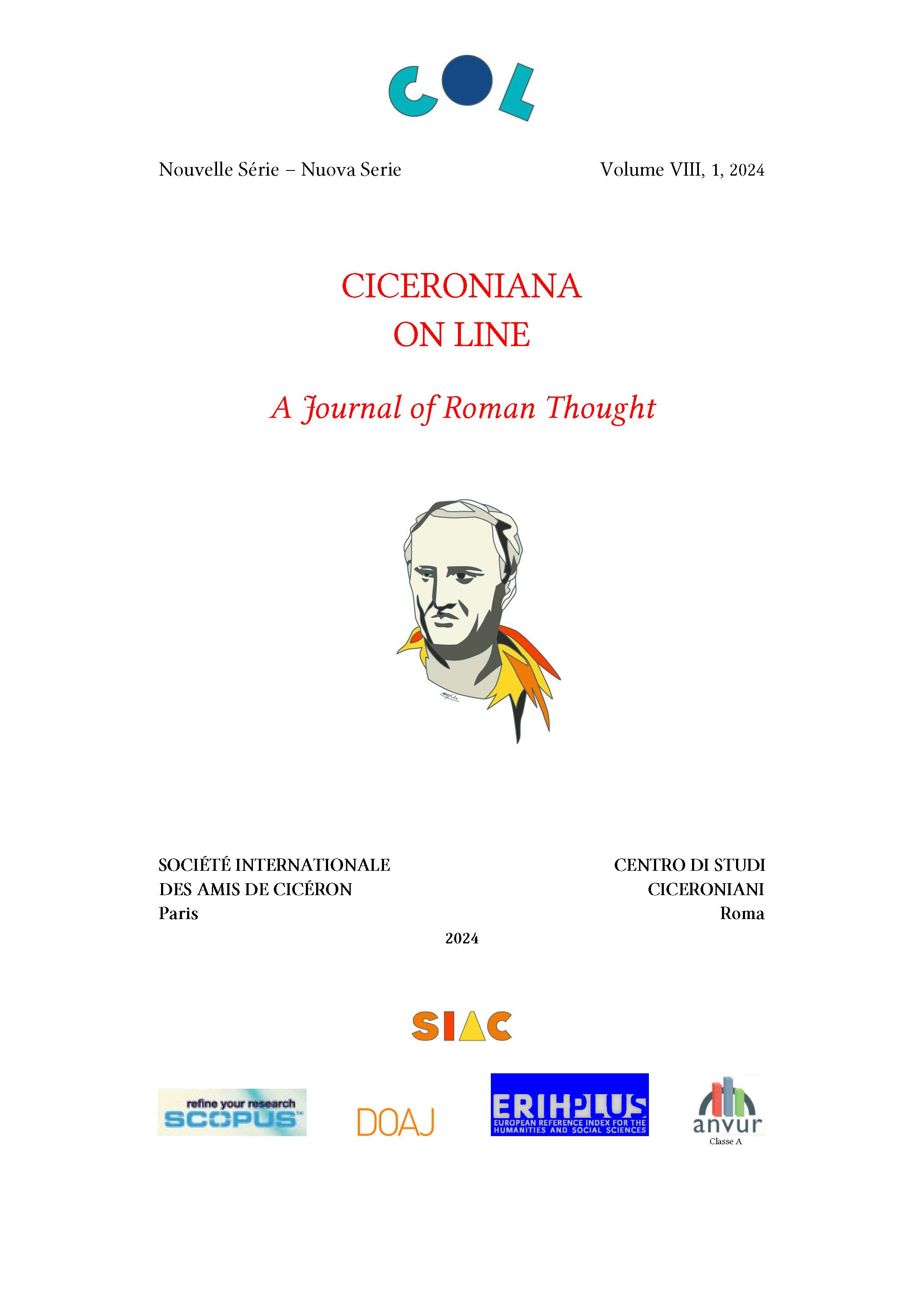Cicero Carneadeus
DOI:
https://doi.org/10.13135/2532-5353/10907Abstract
The figure of Carneades appears frequently in Cicero’s works. Indeed, he is summoned at a central moment in the discussion of justice between Philus and Laelius in the third book of De re publica. This article examines the image that Cicero constructs of Carneades in order to show that, for Cicero, Carneades’ significance extends far beyond the passages in which his philosophical ideas and his two speeches for and against justice are invoked. Cicero takes Carneades as a model on which he draws to compose his own works and, this paper argues, which he skilfully surpasses in the process.
Downloads
Downloads
Published
How to Cite
Issue
Section
License
Authors who publish with this journal agree to the following terms:
- Authors retain copyright and grant the journal right of first publication with the work simultaneously licensed under a Creative Commons Attribution License that allows others to share the work with an acknowledgement of the work's authorship and initial publication in this journal.
- Authors are able to enter into separate, additional contractual arrangements for the non-exclusive distribution of the journal's published version of the work (e.g., post it to an institutional repository or publish it in a book), with an acknowledgement of its initial publication in this journal.


 Ciceroniana On Line is recognised by ANVUR (the National Agency for the Evaluation of the University System and Research) as a CLASS A journal for the Sciences of Antiquity, Philology, Literature and History of Art (
Ciceroniana On Line is recognised by ANVUR (the National Agency for the Evaluation of the University System and Research) as a CLASS A journal for the Sciences of Antiquity, Philology, Literature and History of Art ( The journal is included in DOAJ. The DOAJ listing of the journals is available at
The journal is included in DOAJ. The DOAJ listing of the journals is available at  The journal is indexed in
The journal is indexed in  The journal has been included in ERIH PLUS. The ERIH PLUS listing of the journals is available at
The journal has been included in ERIH PLUS. The ERIH PLUS listing of the journals is available at 

